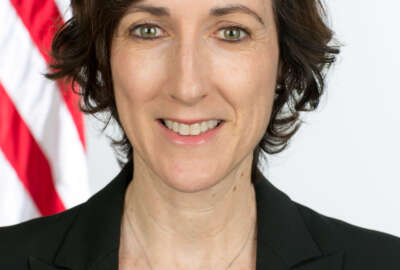
Breaking the ‘institutional density’ of industry, government communications
The Federal Acquisition Regulatory Council is trying again to promote communication between acquisition workers and vendors as early as possible in the contract...
Two mythbusters memos from the Office of Federal Procurement Policy; the reestablishment of the Frontline Forum for contracting officers; a host of Web and in-person educational sessions over the last five years, and still the idea that government and industry can communicate about contracts is hard for many acquisition workers to grasp.
Someone called it a matter of breaking through the “institutional density” of an organization.
The latest attempt to break through that historic blockage is a proposed rule by the Federal Acquisition Regulatory Council in Nov. 29’s Federal Register.
The proposed rule says “government acquisition personnel are permitted and encouraged to engage in responsible and constructive exchanges with industry, so long as those exchanges are consistent with existing laws and regulations, and promote a fair competitive environment.”
The council says they hope this change “will better equip federal acquisition officials with the information needed to issue high-quality solicitations.”
Seems simple enough. No?
But for a variety of reasons, most agencies — and there are few true exceptions — continue to struggle with how frequent, when and why they should talk to contractors.
“The proposed rule is a commentary of where we are in the ability for the government and industry to talk,” said Roger Waldron, the president of the Coalition for Government Procurement. “Even with OFPP issuing two memos and now this regulation, it’s not being done, and the fear of engaging with industry is still there. There is less incentive today to talk.”
Waldron said he’s not sure whether it’s because of the fear of auditors and doing something wrong, or a lack of leadership or what that is causing these challenges. He said the communication between vendors and government acquisition workers seems to have been on a downhill slide since the late-1990s.
Waldron and every other expert I talked to praised the FAR Council and Congress, which called for the change in the 2016 Defense authorization bill, for trying to address this challenge once again.
Tim Cooke, the president and CEO of ASI Government, said part of the problem is the message of communication is not being translated down to the operational activity.
“This is the old nudge thing, it’s one thing to say, ‘You should do it,’ versus saying, ‘The FAR tells you to do it,’” he said. “The FAR is like the Bible for contracting officers.”
Curtis Cote, managing director at the Censeo Consulting Group, said the proposed rule also is targeting people who need it the most versus memos that targeted the senior leaders.
“Mythbusters provided a great framework and injected energy into the acquisition community when it was first released. However, it didn’t really make its way into the day-to-day work of acquisition professionals. One reason is the sheer amount of work contracting officers and contracting officer representatives already have on their plate. Engaging with industry takes time, especially if it’s going to be done well,” he said. “Another reason is that Mythbusters was informational, not operational. That is, it provided great tips but not specific guidance, tools and incentives for COs and CORs to put the ideas into practice.”
As part of the 2011 Mythbusters memo, OFPP required agencies to develop vendor communication plans.
In September 2015, ASI Government surveyed agencies and found 20 actually met OFPP’s goal.
“When we talk to acquisition leaders, they tell me they tell contracting officers that ‘You don’t work for the lawyers, and you need to get them to say yes and not no.’ That requires early engagement,” Cooke said. “If you are worried about the oversight community, it means you need to get them talking early, and you need to get yeses out of overseers and engage those organizations early in process.”
Along with the challenge of auditors or oversight bodies, Joe Jordan, former OFPP administrator and now CEO of FedBid, said the risk averse nature of contracting officers and other acquisition workers also plays a big role the lack of communication.
“The oversight culture has been intense to a point of at times really dis-incentivizing smart risk taking,” Jordan said. “There are lot of problem identifiers and not as many solution providers. I do hear from procurement leaders a lot that they will give contracting officers cover for taking smart risks, but how do we get that message more widely disseminated. I believe OFPP has said similar things over the years too.”
Waldron said the problem with auditors and overseers goes even deeper.
“The second guessing of contractors and personnel by oversight community, the Monday morning quarterbacking is counterproductive,” he said. “It creates risk adverse culture and approach that in the long run is costing taxpayers in terms of better outcomes. You always have to accept a certain amount of risk to get good outcomes. In the oversight community, there is not a great wealth of procurement expertise. They are second guessing what people are doing and not grounded in acquisition regulations or laws.”
Waldron said leadership and training are the biggest issues. There aren’t enough people like the Homeland Security Department’s Chief Procurement Officer Soraya Correa. Correa is using events such as reverse industry days or taking the approach of “show not tell” for solicitations to ensure DHS is getting the best out of vendors.
Experts also pointed to the General Services Administration’s use of its Interact platform to communicate with industry around programs such as Alliant, OASIS and Networks 2020. GSA also named an ombudsman in 2014 to help give industry a bigger voice in the agency.
Censeo’s Cote said implementing a supplier management program could include:
- Having ongoing discussions with vendors to help understand market dynamics, and the key procurement levers within an industry;
- Having iterative discussions with vendors before a requirement is defined to understand the different models vendors have to provide value to their customers;
- Giving vendors multiple channels to ask questions and otherwise clarify solicitation requirements and instructions;
- As appropriate, engaging in vigorous negotiations to maximize total value to the government (both price and terms and conditions);
- After a contract is awarded, keeping an open line of communication with the winning vendor to ensure the contract’s objectives are met.
But many experts say DHS, GSA and maybe a few others are the exception and not the rule. Waldron said he hopes the push by Congress for agencies to reembrace commercial item practices gets some traction.
“It’s a commercial best practice for suppliers to talk to buyers,” he said. “I think Congress wants agencies to get back to the idea of streamlining procurement and doing transactions outside the standard process because it’s too process driven instead of outcome driven.”
Waldron said the last time there was a similar push from Congress, the innovations from the 1990s came about.
So maybe this is the beginnings of a second acquisition reformation?
Return to the Reporter’s Notebook
Copyright © 2024 Federal News Network. All rights reserved. This website is not intended for users located within the European Economic Area.
Jason Miller is executive editor of Federal News Network and directs news coverage on the people, policy and programs of the federal government.
Follow @jmillerWFED
Related Stories

OFPP dispels 8 more agency, vendor communications myths





